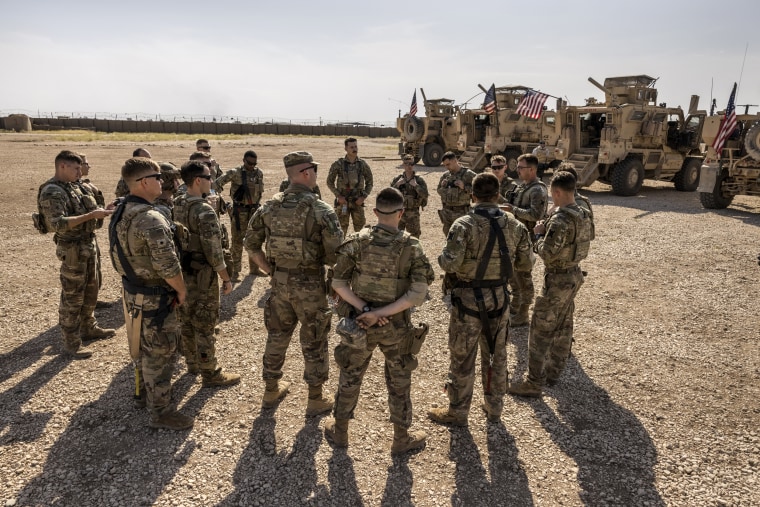Three U.S. service members were injured in two separate rocket attacks on facilities housing U.S. troops in Syria, U.S. Central Command said in a statement.
One service member at Mission Support Site Conoco was treated for a minor injury and returned to duty, said the command, known as CENTCOM. Two others are under evaluation for minor injuries.
The U.S. responded with strikes using AH-64 Apache attack helicopters, AC-130 gunships and M777 artillery, according to CENTCOM, killing four Iran-affiliated militants and destroying seven rocket launchers.
“We will respond appropriately and proportionally to attacks on our service members,” said Army Gen. Michael “Erik” Kurilla, CENTCOM’s commander. “No group will strike at our troops with impunity. We will take all necessary measures to defend our people.”
The U.S. bases at Conoco and Mission Support Site Green Village, both in northeastern Syria, began taking rocket fire Wednesday afternoon. It is not clear whether either location sustained damage to structures or equipment.
The attacks began around 7:20 p.m. local time in Syria, and the entire incident, including the attacks and the U.S. military response, lasted about two hours.
It is not yet known which militant group was behind the attacks.
Earlier Wednesday, the U.S. had launched airstrikes in Syria, targeting what it said was infrastructure used by groups affiliated with Iran’s Islamic Revolutionary Guard Corps.
The strikes were carried out at the direction of President Joe Biden, Col. Joe Buccino, CENTCOM’s communication director, said in a statement.
There are not believed to have been any casualties in the strikes, which hit nine bunkers used for storage, a U.S. military official said. The bunkers were described as ammunition depots and logistics supply facilities.
The strikes were carried out by F-15 and F-16 fighters.
The airstrikes were retaliation for attacks Aug. 15 on U.S. military facilities in Syria, the military official said.
“The U.S. strikes targeted infrastructure facilities used by groups affiliated with Iran’s Islamic Revolutionary Guard Corps,” Buccino said.
Asked why the U.S. responded to the Aug. 15 attacks with strikes early Wednesday, Colin Kahl, the undersecretary of defense for policy, told NBC News: "Part of it’s an accumulation. We don’t want Iran to draw the wrong conclusion that they can continue just doing this and get away with it. But part of it was also the nature of the attacks on the 15th. The fact that they were coordinated against two U.S. facilities at the same time. The fact that we believe we have Iran dead to rights on attribution, that the [drone] parts that we’ve collected, for example, traced directly back to Tehran.
"I think our concern was that this might be an indication that Iran intends to do more of this, and we wanted to disabuse them of any sense that that was a good idea."
There were drone attacks near Al-Tanf Garrison and rocket fire landed near the Green Village base on Aug. 15, officials have said. There were no casualties, the military has said.
U.S. forces are in Syria to fight the Islamic State terrorist group. In July, the military said a U.S. airstrike in Syria killed a senior Islamic State leader, Maher al-Agal.
U.S. officials have accused Iranian proxies or Iranian-backed militias of conducting strikes targeting bases that house U.S. forces in Syria and Iraq.
Iran’s U.N. mission this year said the country had no role in the incidents.

